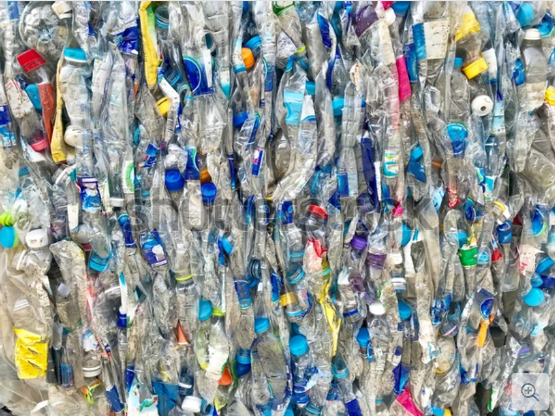Recycled Polyester Goes Mainstream: rPET Processing Challenges No Longer A Barrier

The 2025 Recycled Polyester Challenge asks brands to dramatically and rapidly increase their use of rPET to help reduce greenhouse gas emissions. While achieving color consistency with rPET fibers remains tough, economical and eco-friendly dyeing solutions are now available.
As an energy-intensive industry, fashion is responsible for a sizeable portion of global greenhouse gas emissions: 4% in 2018, according to McKinsey, with upstream activities like raw-material production and processing contributing more than 70% of that total.
Bringing more sustainable raw materials into the supply chain is thus a very effective way for the sector to dramatically reduce its impact on climate change. Unfortunately, emissions reduction targets that align the industry with the Paris Accord climate goals remain out of reach today.
The case for rPET
Among the options for sustainable materials, recycled polyester (rPET) is a standout.
Polyester is the most widely used fiber in the apparel industry, accounting for around 52% of the total volume of fibers produced globally. But only about 14% of this comes from recycled inputs, according to the Textile Exchange 2020 Preferred Fiber & Materials Market Report. This is disappointing since rPET production results in about 70% fewer GHG emissions than virgin polyester, Textile Exchange says.
While many brands use some rPET in their collections, few disclose their overall material mix. In contrast, a handful of the world’s top brands have stepped up over the past few years with ambitious targets to eliminate virgin polyester:
- Adidas is on track to entirely rely on rPET from 2024, reaching 60% sustainable materials this year after announcing its target back in 2018;
- Inditex brands, including Zara, have pledged to switch to 100% recycled polyester by 2025; and
- Tommy Hilfiger will phase out the use of virgin oil-based polyester by 2025.
More brands pledge support
Many more brands are now joining these rPET pioneers thanks to the 2025 Recycled Polyester Challenge, which launched in February this year. Created by Textile Exchange and the United Nations’ Fashion Industry Charter for Climate Action, it aims to increase the use of rPET in the apparel industry from 14% today to 45% by 2025.
More than 85 brands and suppliers have already signed up to the Challenge, including Banana Republic, H&M, Itochu, J.Crew, Lululemon Athletica, Nike and VF Corp. They will benchmark their rPET usage, set reduction targets and make positive changes. Even so, eliminating virgin polyester will not be easy.

Challenges remain
rPET is currently produced using mainly post-consumer plastic bottles as feedstock. These bottles are washed and mechanically shredded into polyester chip for reuse.
rPET recycling keeps waste plastic out of landfill and the ocean. But with increasing demand for rPET by the packaging industry, there could be limited supplies of rPET for fashion in the future. Closed-loop rPET, where garments made from recycled polyester are turned back into rPET fibers, could be the answer. However, more research is needed to ensure that the quality of the polyester material does not degrade during recycling and that the process is both cost-effective and scalable.
Furthermore, processing rPET fibers is challenging. The rPET chips generated by mechanical recycling vary in color. This makes it very difficult for dye houses to achieve a consistent color within a batch of rPET, especially for pale shades. And most dye solutions require extensive re-dyeing for batch-to-batch consistency. Producing full white is yet more difficult; even with intensive pre-treatment, it is not always possible. What’s worse, dyeing and whitening both require high water, energy and chemical use.
Eco-friendly solutions
We help brands overcome these challenges and meet their rPET commitments in line with the expectations of customers and other stakeholders. Our rPET processing solutions include pre-treatment chemicals, fluorescent whitening agents, state-of-the-art coloration systems and finishing solutions for high-performance protection and comfort garments. These are eco-friendly and can be easily incorporated into existing processes to deliver right-first-time quality, helping to maintain mill productivity and competitiveness.
Martin Weber, Global Marketing Manager - Washfast, Huntsman Textile Effects
